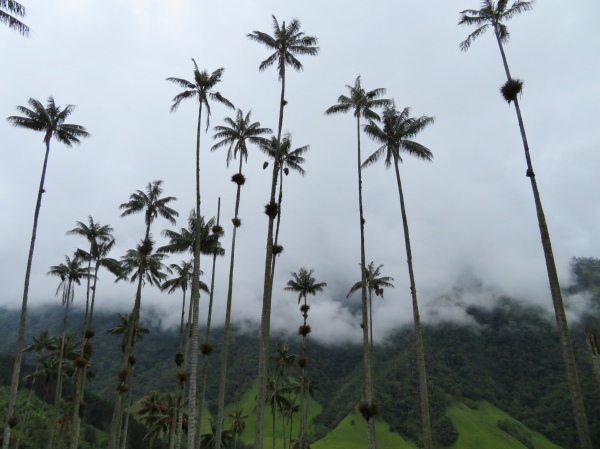Via sanblasadventures.com we made our reservation for 4 days of island hopping around the San Blas archipelago in front of the Panamanian coast.
Day 1 of our San Blas adventure began with the most annoying part because we had to get our exit stamps in Panama and we were informed upfront that this process could take anywhere between 45 min and 6 hours… thanks to ‘some luck’ it went quick that day and we only needed 2,5 hours 😉
After a boat drive of another 2,5 hours we arrived at Atidup island. This island was exactly why we signed up for the trip; beautiful white sandy beaches, palm trees, sunshine, volleyball field, food/drinks and friendly travelers to share this with! Our group was 16 people in total and a nice mixture of nationalities: Swedes, Aussies, Americans, Swiss and some Dutchies. After playing a few games of volleyball and some chilling and drinking we went to a Kuna village called Caledonia. Here we got a tour around the small Kuna town and we had dinner in a restaurant. Our accommodation was also in Caledonia and it even had real beds so we enjoyed a night of pretty good sleep.
On the second day we visited Pelicano II Island. This was an uninhabited island where we could go for snorkeling, play some volleyball, read, sleep and repeat 😉
Not doing so much was also perfectly fine because the rum of the previous day was still noticeable.
Again we had our accommodation on a different island in a Kuna village but this time we only had hammocks to sleep in. Good thing that the whole group played the drinking game ‘Kings Cup’ after dinner so it was easier to fall asleep in the hammocks 😉
On day 3 the boats took us to Pelicano Island. We had a very nice lunch on the island and in the afternoon we had a short boat ride to Cocobandera Island.
This island is owned by a Kuna family and via a rotation system there are always some members of the family to take care of the guests. The family sells cold drinks and also took care of lunch the last day. They even helped some guys of our group with injuries as they stepped in some coral the other day. In the evening we had an amazing dinner with fresh lobsters and after dinner we enjoyed the bonfire!
The last day we chilled on Cocobandera Island and we had a boat ride to Carti in the afternoon. From Carti we got transferred into Jeeps that took us to Panama City in 2,5 hours. We had a great trip and we definitely can recommend it if you want to relax in paradise!




























































































































